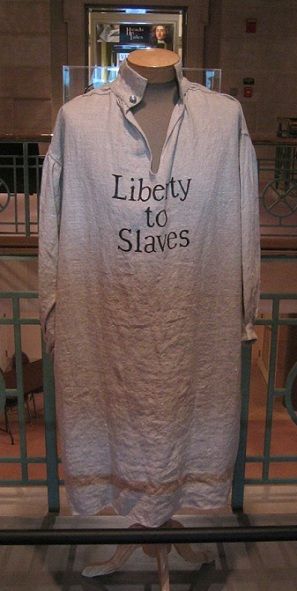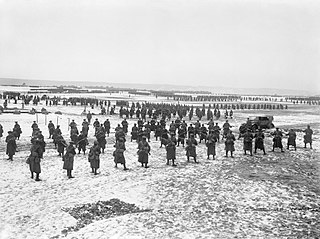Related Research Articles

Sierra Leone, officially the Republic of Sierra Leone, is country on the southwest coast of West Africa. It shares its southeastern border with Liberia and is bordered by Guinea to the north. With a land area of 71,740 km2 (27,699 sq mi), Sierra Leone has a tropical climate and with a variety of environments ranging from savannas to rainforests. According to the 2015 census, Sierra Leone has a population of 7,092,113, with Freetown serving as both the capital and largest city. The country is divided into five administrative regions, which are further subdivided into 16 districts.
Sierra Leone first became inhabited by indigenous African peoples at least 2,500 years ago. The Limba were the first tribe known to inhabit Sierra Leone. The dense tropical rainforest partially isolated the region from other West African cultures, and it became a refuge for peoples escaping violence and jihads. Sierra Leone was named by Portuguese explorer Pedro de Sintra, who mapped the region in 1462. The Freetown estuary provided a good natural harbour for ships to shelter and replenish drinking water, and gained more international attention as coastal and trans-Atlantic trade supplanted trans-Saharan trade.

Mutiny is a revolt among a group of people to oppose, change, or remove superiors or their orders. The term is commonly used for insubordination by members of the military against an officer or superior, but it can also sometimes mean any type of rebellion against any force. Mutiny does not necessarily need to refer to a military force and can describe a political, economic, or power structure in which subordinates defy superiors.

Operation Barras was a British Army operation that took place in Sierra Leone on 10 September 2000, during the late stages of the nation's civil war. The operation aimed to release five British soldiers of the Royal Irish Regiment and their Sierra Leone Army (SLA) liaison officer, who were being held by a militia group known as the "West Side Boys". The soldiers were part of a patrol that was returning from a visit to Jordanian peacekeepers attached to the United Nations Mission in Sierra Leone (UNAMSIL) at Masiaka on 25 August 2000 when they turned off the main road and down a track towards the village of Magbeni. There the patrol of twelve men was overwhelmed by a large number of heavily armed rebels, taken prisoner, and transported to Gberi Bana on the opposite side of Rokel Creek.

The West India Regiments (WIR) were infantry units of the British Army recruited from and normally stationed in the British colonies of the Caribbean between 1795 and 1927. In 1888 the two West India Regiments then in existence were reduced to a single unit of two battalions. This regiment differed from similar forces raised in other parts of the British Empire in that it formed an integral part of the regular British Army. In 1958 a new regiment was created following the creation of the Federation of the West Indies with the establishment of three battalions, however, the regiment's existence was short-lived and it was disbanded in 1962 when its personnel were used to establish other units in Jamaica and Trinidad and Tobago. Throughout their history, the regiments were involved in a number of campaigns in the West Indies and Africa, and also took part in the First World War, where they served in the Middle East and East Africa.

Black Loyalists were African-Americans who sided with the Loyalists during the American Revolutionary War. In particular, the term refers to men who escaped enslavement by Patriot masters and served on the Loyalist side because of the Crown's guarantee of freedom.

The Cocos Islands mutiny was a failed mutiny by Sri Lankan soldiers against British officers, on the Cocos (Keeling) Islands on 8 May 1942, during the Second World War.

The Étaples mutiny was a series of mutinies in September 1917 by British Army and British Imperial soldiers at a training camp in the coastal port of Étaples in Northern France during World War I.

The Anglo-Ashanti wars were a series of five conflicts that took place between 1824 and 1900 between the Ashanti Empire—in the Akan interior of the Gold Coast—and the British Empire and its African allies. The wars were mainly due to Ashanti attempts to maintain and enforce their imperial control over the coastal areas of present-day Ghana, where peoples such as the Fante and the Ga had come under the protection of the British. Although the Ashanti emerged victorious in some of these conflicts, the British ultimately prevailed in the fourth and fifth conflicts, resulting in the complete annexation of the Ashanti Empire by 1900.

The War of the Golden Stool, also known as the Yaa Asantewaa War, the Third Ashanti Expedition, the Ashanti Uprising, or variations thereof, was a campaign in 1900 during the series of conflicts between the United Kingdom and the Ashanti Empire, an autonomous state in West Africa that fractiously co-existed with the British and its vassal coastal tribes.

The Cavite mutiny was an uprising of Filipino military personnel of Fort San Felipe, the Spanish arsenal in Cavite, Philippine Islands on January 20, 1872. Around 200 locally recruited colonial troops and laborers rose up in the belief that it would elevate to a national uprising. The mutiny was unsuccessful, and government soldiers executed many of the participants and began to crack down on a burgeoning Philippines nationalist movement. Many scholars believed that the Cavite mutiny was the beginning of Filipino nationalism that would eventually lead to the Philippine Revolution.

The Ghana Army is the principal land warfare force of Ghana. In 1959, two years after the Gold Coast became independent from the British Empire, the Gold Coast Regiment was withdrawn from the Royal West African Frontier Force and formed the basis for the new Ghanaian army. Together with the Ghana Air Force and Ghana Navy, the Ghana Army makes up the Ghana Armed Forces, which is controlled by the Ghanaian Ministry of Defence and Central Defence Headquarters, both of which are located in the Greater Accra Region.

The 81st Division was formed under British control during the Second World War. It took part in the Burma Campaign.
The 1917 French Army mutinies took place amongst French Army troops on the Western Front in northern France during World War I. They started just after the unsuccessful and costly Second Battle of the Aisne, the main action in the Nivelle Offensive in April 1917. The new French commander of the armies in France, General Robert Nivelle, had promised a decisive victory over the Germans in 48 hours; morale in French armies rose to a great height and the shock of failure soured their mood overnight.
Alfred Burdon Ellis (1852–1894) was a British Army officer and ethnographer, known for his writings on West Africa.
The military history of The Gambia spans from the earliest colonial contact in the 1500s through to the present day. Although it is currently one of the least militarized countries in the world, The Gambia has seen various colonial conflicts, and has contributed soldiers to Britain in World War I and World War II as part of the Gambia Regiment. Since independence in 1965, The Gambia has experienced various peacekeeping operations, as well as the 1994 military coup d'état and the 2017 ECOWAS military intervention.
The Barra War, also known as the Anglo-Niumi War or the British-Barra War, was a military conflict that lasted from 1831 to 1832 between forces of the British Empire and the Kingdom of Niumi, in what is now The Gambia.

Sierra Leone remained a British colony throughout World War II. As such, it fought alongside the Allies against the Axis. No large scale battles or military action took place in or around Sierra Leone during the war. However, the colony played a critical role in supporting the Allies throughout the conflict, with Freetown acting as an important convoy station.
The Gold Coast Artillery corps was formed in 1850.Their uniform was similar to that of the West India Regiments.
Capital punishment has been abolished in Sierra Leone. Sierra Leone abolished capital punishment in July 2021 following a decision by the nation's Parliament.
References
- ↑ "African Soldiers' Mutinies". elwininternational.com. Retrieved 2020-08-28.
- ↑ "Remembering the Kumasi Mutiny of 1901". www.ghanaweb.com. 2020-07-19. Retrieved 2020-08-28.
- ↑ "Remembering the Kumasi Mutiny of 1901". Ghanaian Museum. 2020-05-16. Retrieved 2020-08-28.
- ↑ Killingray, David (1983). "The Mutiny of the West African Regiment in the Gold Coast, 1901". The International Journal of African Historical Studies. 16 (3): 441–454. doi:10.2307/218745. ISSN 0361-7882. JSTOR 218745.
- ↑ Dwyer, Maggie (2018-02-01), "A Coup Hidden in a Mutiny", Soldiers in Revolt, Oxford University Press, pp. 101–124, doi:10.1093/oso/9780190876074.003.0006, ISBN 978-0-19-087607-4